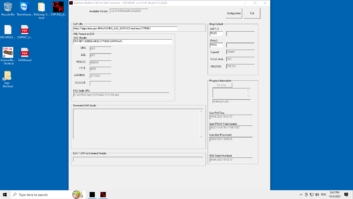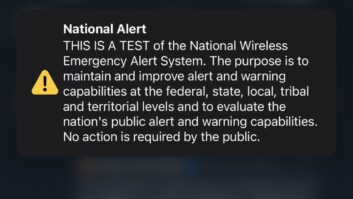
Engineers and others in radio have questions about what’s happening with EAS. I asked public warning systems consultant and educator Art Botterell, also creator of the Common Alerting Protocol, a few EAS questions via e-mail.
RW:FEMA just recently approved CAP V1.2 and says their 180-day shot clock for stations to have CAP-capable EAS gear has begun. Is there a chance the clock could be delayed?
Botterell: The FCC has the power to do that, assuming broadcasters file for an extension or even a reconsideration. So far I’m not aware of what anyone has filed. If an extension doesn’t happen quickly it’ll be moot, as stations will need to order equipment fairly soon in order to be sure of meeting the current end-of-March deadline. So delay in filing, in this case, is essentially acceptance.
[NAB told Radio World it would support a “modest extension” of the 180-day deadline and this week the trade group and several other organizations asked the commission for at least a six-month delay.]
RW:How would a station know if its EAS gear can receive and or send a CAP-enabled message?
Botterell: Well, their vendor will say so. But that may mean less than it seems, since vendors are giving priority to getting federal CAP alerts from FEMA’s “IPAWS” servers. And IPAWS connectivity isn’t necessarily the same thing as that used for state or local CAP relay networks.
RW:What is a “Governors Must Carry” message? An FCC working group has asked FEMA to clarify how “Governor Must Carry” messages will be implemented.
Botterell: Basically, under the amended FCC rules the State Emergency Communications Committees in states that implement CAP relay networks (or decide to rely on FEMA’s network, I suppose) can elect to give their Governor and “designees” the authority, equivalent to the President’s, to require stations to carry their EAS messages or else sign off the air. The details will need to be spelled out by the SECCs and then approved by the FCC. We don’t know what the FCC will or won’t approve yet.
RW:Is there anything else stations need to know?
Botterell: I think the main thing broadcasters need to understand is that FEMA’s IPAWS program is mainly focused on national security and the presidential capability of EAS. The particular office within FEMA that manages IPAWS has no responsibility for state and local public safety or emergency management. So if folks are concerned about AMBER alerts and other state and local functions they need to get busy and contact those folks.
The other thing of which I’d remind broadcasters is that cellular alerting is coming in 2012. That’s going to be a game-changer in ways that go well beyond the immediate politics of FM chips. One major example: Cell phones will be able to select where to alert people selectively in particular areas instead of having to interrupt service for their whole audience.
About Botterell’s involvement with CAP… He tells me he came up with the concept in 1999, organized the original open-source effort to define it in 2001. He then shepherded CAP through a series of field trials and revisions in 2002 and 2003, and contributed the work to the standards-setting group OASIS, the Organization for the Advancement of Structured Information Standards, and edited the 1.0 version of the OASIS spec in 2004.










